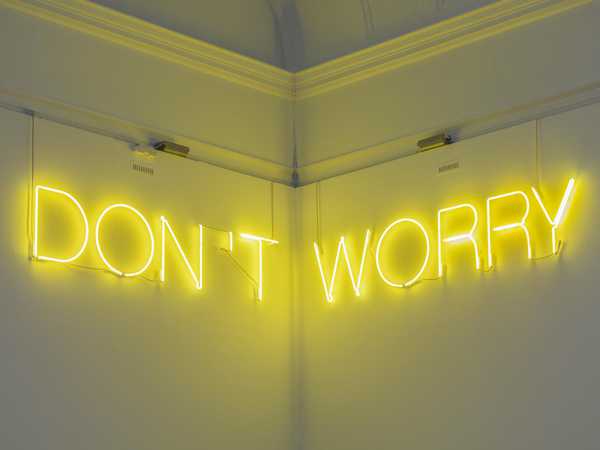Travelogue lecture with missing content
2001 - Installation (Installation)
Variable dimensions
Ryan Gander
This work is meditative and fragile. These abstract forms are projected slides belonging to another lecture, Travelogue , where the images have been removed. What is left is the hole of the frame of the slide that light draws upon and projects on the wall. Seated on a group of corduroy cushions, the spectator is invited the follow the ‘spectacle’ of forms that appear and disappear to the rhythm of the two projectors. Ryan Gander presents us with a void which is a space to fill. Here absence is presence. He plays with emptiness and fullness, forms and counter-forms. These voids are proof of removed content, leaving an ‘aura’ which becomes a place for nostalgia or the imagination.
Ryan Gander’s practice explores what-ifs, questioning the structural limits and rules of society and being. His work, which ranges from installations, sculptures and photographs, to performative lectures, publications, inventions and intervention, looks at the production of art and culture, to enquire into the processes through which art is perceived and valued. The spirit of his practice centers on development, education, and storytelling, hoping to evoke immediate and honest engagements by the viewer with his narratives. Gander is a collector. His studio is filled with found images, personal images, printed documents and newspaper clippings.
Colors:
Related works featuring themes of: » British

© » KADIST
Keith Tyson
The work of Keith Tyson is concerned with an interest in generative systems, and embraces the complexity and interconnectedness of existence...

© » KADIST
Anthony McCall
1973The film Line Describing a Cone was made in 1973 and it was projected for the first time at Fylkingen (Stockholm) on 30 August of the same year...

© » KADIST
Charles Avery
2012Since 2005, Charles Avery has devoted his practice to the perpetual description of a fictional island...

© » KADIST
Rosalind Nashashibi
2019Rosalind Nashashibi’s paintings incorporate motifs drawn from her day-to-day environment, often reworked with multiple variations...

© » KADIST
Andrew Grassie
2009In 2008, Grassie was invited by the Whitechapel Gallery to document the transformation of some of its spaces...

© » KADIST
Chris Wiley
2012Architectural details become abstracted renderings in Chris Wiley’s inkjet prints 11 and 20 (both 2012)...

© » KADIST
Chris Wiley
2012Architectural details become abstracted renderings in Chris Wiley’s inkjet prints 11 and 20 (both 2012)...

© » KADIST
Anthony McCall
1974This score is a graphic record of the detailed choreography of one of Anthony McCall’s Landscape for Fire performances...

© » TATE EXHIBITIONS
Martin Creed
Martin Creed | The Dick Institute Experience the work of one of this country’s most ingenious, audacious and surprising artists at the Dick Institute ARTIST ROOMS Martin Creed presents highlights from the British artist’s thirty-year career...

© » KADIST
Toby Ziegler
2007Wagon Wheel is a work with a fundamental dynamism that derives both from the rotating movement of the elements suspended on poles and the kicking of the legs of the figure...

© » KADIST
Ian Wallace
1986Wallace says of his Heroes in the Street series, “The street is the site, metaphorically as well as in actuality, of all the forces of society and economics imploded upon the individual, who, moving within the dense forest of symbols of the modern city, can achieve the status of the heroic.” The hero in Study for my Heroes in the Street (Stan) is the photoconceptual artist Stan Douglas, who is depicted here (and also included in the Kadist Collection) as an archetypal figure restlessly drifting the streets of the modern world...

© » KADIST
Simon Starling
2007Invited in 2007 to the Museum Folkwang in Essen (Germany), Simon Starling questioned its history: known for its collections and particularly for its early engagement in favor of modern art (including the acquisition and exhibition of works by Cézanne, Gauguin, Van Gogh, Matisse), then destroyed during the Second World War, the museum was pillaged for its masterpieces of ‘degenerate art’ by the nazis...








